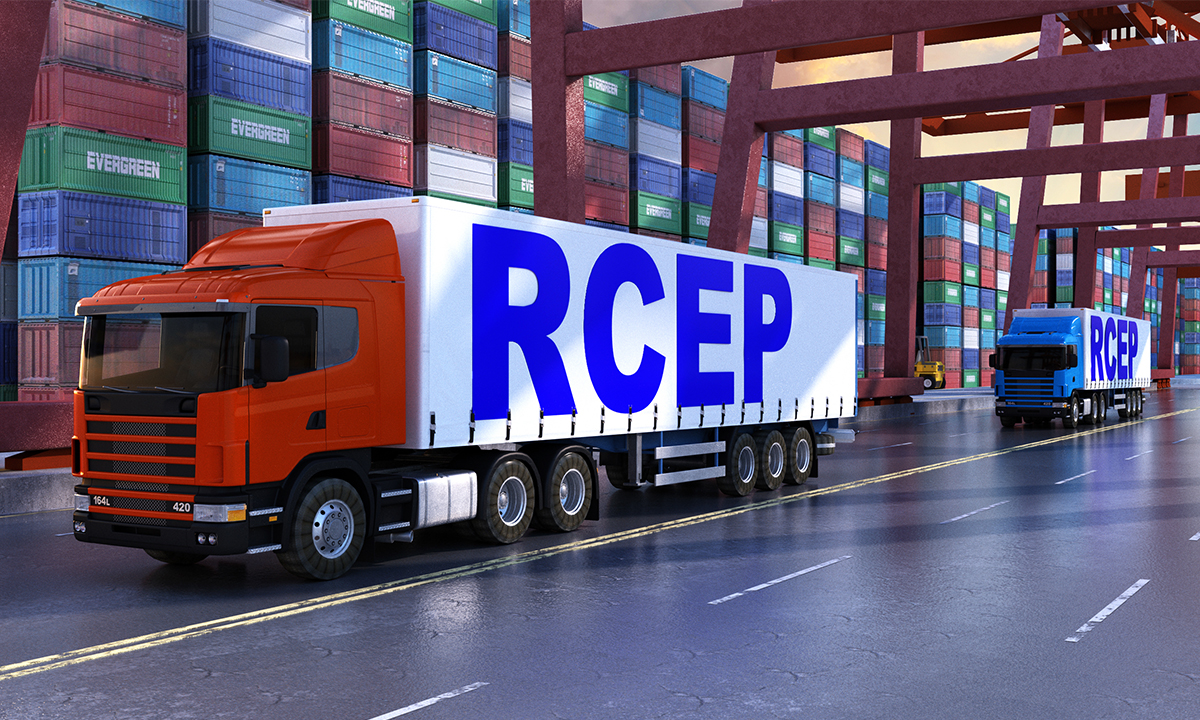
Photo: CFP
A wave of initial deals swept across China's exporting provinces in the first week of implementation of the Regional Comprehensive Economic Partnership (RCEP) pact, as companies across China are thrilled at the tangible RCEP benefits.
Some believe the boost delivered by the recently implemented mega trade deal is similar to that of WTO accession, with some even announcing plans to shift their market focus to fully tap into the opportunity.
Statistical projections by a top Chinese think tank that the deal is expected to lift regional exports by 18.3 percent by 2035 match the experience of businesses, with some exporters and importers providing a detailed account of how the deal has helped them save money, and perhaps more importantly, time.
In some circles, "certificate of origin" has become a buzzword for trading company executives, trade officials and industry players across China, from coastal ports to inland provinces. Some were even planning a shift in their business focus to fully target benefits brought about by the RCEP.
Hainan Yanghang Industrial Company in South China's Hainan Province was among the first enterprises to enjoy the zero tariff policies under RCEP. On January 1, the company was issued a RCEP certificate of origin by Haikou customs.
"With this certificate, a shipment of aluminum sulfate worth 46,301 yuan ($7,260) we export to Japan now enjoys zero tariff treatment, with a tax reduction of about 2,315 yuan," Li Xiaotao, head of the company, told the Global Times on Thursday.
Li expects all of China's export enterprises to benefit from lower taxes and enjoy better export prospects built on price advantages.
"In 2022 we plan to expand the market of RCEP members and expect that our exports to increase several times over from last year," Li said.
Since the RCEP officially came into force on January 1, the China Council for the Promotion of International Trade (CCPIT) issued 275 RCEP certificates of origin for 135 Chinese enterprises from 18 provinces, autonomous regions and municipalities as of Wednesday, a senior CCPIT official said on Thursday.
Under the RCEP, more than 90 percent of merchandise trade among members will eventually be subject to zero tariffs. The agreement includes 10 ASEAN members, as well as China, Japan, South Korea, Australia and New Zealand. The 15 states' total population, GDP and trade account for about 30 percent of global output.
Zhu Yong, a senior commerce official in Northwest China's Xinjiang Uygur Autonomous Region, told the Global Times on Friday that the region believes the RCEP is a precious opportunity to further engage in high-quality opening-up and the best opportunity to grow business since China's accession to the WTO.
Two certificates of origin were issued on January 1 by the customs authorities in Urumqi and Shihezi, Zhu said. The certificate issued by Urumqi customs will save a local tomato export company $1,824 in imports tariff duties, while the one issued by Shihezi brings tariff reductions to exported items by a local textile company to Japan.
Zhang Xiaopeng, deputy manager of Qingdao Qianwan United Container Marina Company, a subsidiary of Shandong Port Group, told the Global Times on Friday that he expects a surge in both imports and exports due to the RCEP, and container cargo is estimated to post double-digit growth, adding that the company is working on 88 shipping lanes to RCEP countries.
The optimism demonstrated by Chinese trading companies and exporters is believed to be significant in the country's efforts to maintain stable foreign trade in 2022 amid global headwinds. Commerce Minister Wang Shouwen said in a recent interview that the rapid deployment of the new trade deal was essential to year-round success.
According to customs data, in the first 11 months of 2021, China's trade with the other 14 RCEP members totaled 10.96 trillion yuan, accounting for 31 percent of China's total foreign trade.
Imported machinery and appliances, plastic products and electrical equipment enjoy the biggest tariff reduction under the RCEP, according to customs.
Traditional labor-intensive sectors in Southeast Asia also stand to benefit from the RCEP, such as mechanical and textile industries.
Exporters from the region are also counting on the benefits delivered by the RCEP.
Dole, an international fresh fruit trader, said produce from ASEAN members stand to benefit tremendously from the zero-tariff policy and customs facilitations under the RCEP, as the time from plantation to supermarkets will be greatly shortened.
"Bananas and pineapples from the Philippines and coconuts and honey pomelos from Thailand are very popular with Chinese consumers," Wang Na, brand director of Dole China, told the Global Times, noting that the RCEP arrangement on reduced tariffs means companies like Dole can provide consumers with more competitive products.
Compared with China, the response in Thailand has been more of a calm one, according to a research note sent to the Global Times by the Bangkok-based KResearch Center noted. Media in Thailand are reacting to the RCEP implementation with a rather mild response.
The center believes that the reason could be the belief that RCEP will only bring limited benefits to Thai exporters as most of its exports and its major trading partners were already covered by previously signed bilateral free trade deals.
Still, the KResearch Center pointed out certain agricultural goods, food and industrial products stand to benefit directly from the implementation of the deal.
Analysts said one reason for the contrast could be that Chinese firms are embracing the RCEP deal fully prepared - Chinese governments at all levels provided training to 166,000 entrepreneurs, trade and customs officials and related personnel to brief them on the RCEP framework, and how to tap into its benefits in the run-up to January 1.
China's Foreign Ministry spokesperson Wang Wenbin said at a regular press conference on Friday that the China and ASEAN face new opportunities in deepening all-round cooperation with the RCEP now in place.
China announced in November that it would strive to import $150 billion worth of goods from ASEAN in a five-year period.




